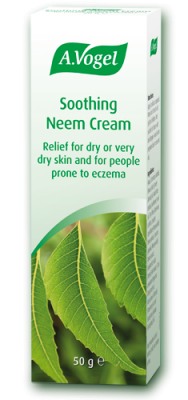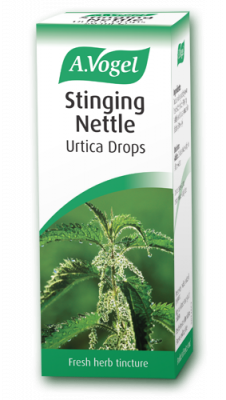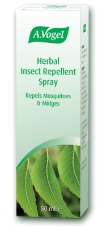1. An underlying skin condition

The first and most obvious cause of skin irritation is an underlying skin condition, such as eczema, psoriasis, acne or rosacea. In these instances, when irritation occurs it’s likely that you’ve encountered a trigger that could be stimulating a flare-up. This trigger can vary depending on the type of skin condition you suffer from; in some cases your environment, what you’ve eaten or sun exposure can play a role. That’s why I’d recommend learning as much as you possibly can about your skin condition – the more you know about the potential irritants, the more steps you can take to avoid them and minimalise their impact in the future!
My thoughts: Inflammation tends to be at the root of most of the symptoms you experience during a flare-up. That’s why doing what you can to ease inflammation is definitely the way to go and, to that end, I’d recommend investing in a soothing cream with natural anti-inflammatory properties. Our Neem Cream is specifically formulated for very dry, sensitive skin types and can help to cool the redness and itchiness often associated with skin irritation.
My Top Tip: Ideal for troubled, eczema-prone skin, helping to calm and soothe areas of redness and irritation. Ideal for troubled, eczema-prone skin, helping to calm and soothe areas of redness and irritation.
|
2. Allergies

Allergies, whether they’re related to pollen, dust, animal dander or even food, all have one thing in common: histamine! This pro-inflammatory chemical is released in abundance by the immune system when it becomes hypersensitive to a usually harmless particle. In these instances, the inflammatory chemicals stimulated by this immune response can upset your skin, causing an itchy red rash to appear. Since your blood vessels also dilate during an allergic response, sometimes blood can permeate through the vessels, leaking into the surrounding tissues and causing hives to appear. If you want to learn a little bit more about skin rashes and allergies, I would definitely take a look at our Allergy Advisor Louise’s article ‘Allergic rhinitis and a skin rash.’
My thoughts: If you’ve suffered consistently from an allergy such as hayfever or animal dander, then you are probably aware of the effect that these substances can have on your skin, as well as the rest of your body! However, sometimes allergies can be less transparent – it could be that your skin is coming into contact with a new plant or environment for the first time and is suddenly taking a reaction. These circumstances can be difficult to manage – I would suggest applying some of our Neem Cream to the affected area and, if hives are an issue, you could check out our Hives treatment pages here!
3. Prickly heat

If you’ve ever been on holiday somewhere hot and sunny, the chances are you’ve encountered this particular irritation before. Prickly heat occurs when your skin is exposed to high temperatures and your sweat glands consequently become blocked, inhibiting your body’s usual cooling method. As a result, a red rash manifests, sometimes accompanied by small bumps and blisters, often affecting the legs, shoulders and face. In addition to the aesthetic appearance of the rash, there can also be a prickly (hence the name of the irritation!) sensation that can sometimes lead to itchiness. 
My thoughts: The good thing about prickly heat is that it’s usually short-lived and there are a number of things you can do to make it more bearable. Cooling your skin down with a lukewarm shower or bath is one way of getting fast relief, although you could also try applying a damp cloth or ice pack. Please bear in mind that your skin may be hypersensitive at this time so try to avoid exposing it to harsh materials, perfumes or artificial chemicals. Some of our customers also report that our Stinging Nettle Complex could be useful here as nettles are naturally rich in antihistamine properties, meaning they can help to fight the chemical responsible for the rashes appearance in the first place.
4. Fluctuating hormones

When it comes to determining the sensitivity of your skin, your hormones can play a big role. The female sex hormone oestrogen, for example, can directly impact your production of collagen so, when oestrogen levels decline during menopause, your levels of collagen also start to diminish which can leave your skin feeling thinner, weaker and more exposed. That’s why many menopausal women suddenly find their skin being more prone to irritation, even to perfumes or skin creams that they had previously been using for decades.
Menopause isn’t the only hormonal change that can make your skin more prone to irritation, though; pregnant women may see increased cases too! This makes sense when you think about it, though; your body will be flooded with growth hormones that, amongst other things, increase the flow of blood, placing more pressure on your blood vessels which can lead to the appearance of ‘spider veins.’
Acne can also become an issue due to these growth hormones but the most infamous source of skin irritation is probably PUPP (Pruritic urticarial papules and plaques of pregnancy). The direct cause of this rash is unknown but it’s believed that it could be related to the stretching of your skin at this time and can be extremely itchy!
My thoughts: When it comes to hormonal changes such as menopause and a declining production of collagen, the best thing you can do is adapt your lifestyle. I talk a little bit more about the types of changes you may need to make in my blog, ‘5 top tips to support ageing skin’ but, simply put, keeping active and maintaining a healthy lifestyle can make a huge difference. Eating foods that are rich in healthy fats and drinking plenty of fluids are small but important steps and you can also amend your skincare routine to include more natural, nourishing products. In cases where pregnancy is affecting your skin, though, the best thing you could do would be to discuss this with your midwife and they should be able to guide you on the relevant treatment options available.
5. Contact eczema

Contact eczema is believed to affect as much as 9% of the population and can occur when your skin comes into contact with either an allergen or an irritant. Since I’ve already delved into allergies, here I’ll mainly be focusing on irritant contact eczema as this affects 80% of contact eczema sufferers.
In irritant contact eczema, irritation tends to present itself very quickly, usually within a few minutes or hours, and your skin will rapidly become inflamed, displaying tenderness, a rash and itchiness. What makes irritant contact eczema so frustrating is that often your skin is simply reacting to common objects, chemicals, metals and materials such as nickel, disinfectants, synthetic clothing, perfumes or detergents. If you are aware of the substance that’s irritating your skin then this is more manageable, but if not, it can be quite confusing!
My thoughts: As I’ve mentioned, the most frustrating thing about irritant contact eczema is its unpredictability. Unfortunately, sometimes repeated flare-ups have to take place before you recognise the underlying issue, but the good news is that there are things you can do to reduce the severity of the irritation. Keeping the outer layer of your skin (the epidermis) moisturised and healthy can go a long way which is why I often recommended sufferers to avoid factors that could affect the sensitivity in this area; low humidity, harsh chemicals, UV radiation etc. Make sure you’re moisturising regularly and that your immune system is in tip-top condition – for more tips, please check out my article on contact eczema.
6. Insect bites and stings

I don’t know about you, but here in the UK wasps are an annual terror come summertime when they seem to roam around in perpetually angry droves. If you’ve ever been stung by a wasp, I’m sure you’ll remember the sensation – the sharp pain and the itchy red welt that appears as the venom permeates your skin, triggering a response from your immune system. Insect bites and stings can be quite irritating, but in most cases in this country they are harmless, unless you take an allergic reaction. If you move further afield, though, more dangerous insects enter the picture, such as mosquitos, whose bites not only transmit a  degree of discomfort but also disease!
degree of discomfort but also disease!
My thoughts: Unless you’ve taken an allergic reaction to a bite or sting (in which case a visit to your doctor will be essential) most of the time you can treat these forms of irritation at home by washing the affected area and applying a cold compress to reduce the inflammation. However, if you’re heading overseas, I’d strongly suggest investing in a reliable insect spray, such as our Neem Insect Repellent. Prepared using neem seed extract, this spray is ideal for sensitive skin and does not contain any abrasive DEET.
7. Medication

Finally, sometimes prescribed medication can cause skin irritation. This largely comes in two forms: allergic and non-allergic. In the case of allergic, you’re simply taking a reaction to one of the ingredients present in your medication. When a reaction happens for non-allergenic reasons, then it can simply be a side effect of that medication. For example, some medications make your skin more susceptible to UV light or cause blood leaks under the skin.
My thoughts: If the medication that has been prescribed for you appears to be affecting your skin, then the best thing you can do is to discuss this with your doctor. They should be able to work with you to find a solution that doesn’t involve any unwanted irritation.








